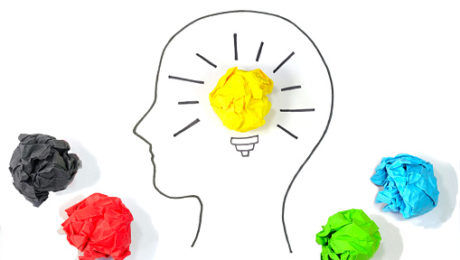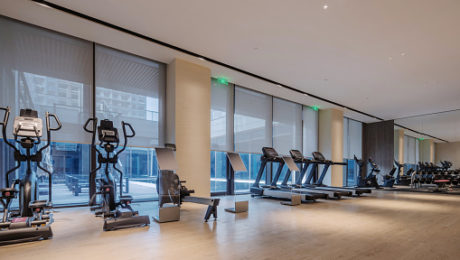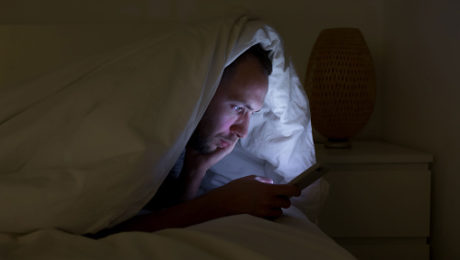Having a Work Smarter, Not Harder Mindset
By Tiffany Stock, Vice President, Marketing & Client Relations
Many years ago, in the throes of a project that I no longer remember, one of my colleagues said something that has stuck with me – work smarter, not harder. I had never heard that phrase before that I could recall, or at least not at a time that it resonated and stuck with me. Fast forward years later, and I would say that phrase pops in to my head a least once a week. With all the tasks in both my personal and professional life, I try to keep that as my mantra and take a step back to make sure that I am being the most effective and efficient as possible – as the old saying goes, time is money, right?!
What this phrase does NOT mean to me is cutting corners to do something faster and/or diluting the outcome just to get something done more quickly. The output should be of equal or greater quality when trying to evaluate if you could be working smarter.
While there is no way to ensure that everything you do is being done in the most efficient way and with the best outcomes, having that as a goal really helps set the stage and create the mindset.
Here are some things that have helped me try to implement this thought process into my everyday:
- Habits: Create habits that are going to help you achieve your goals – if you have not read Atomic Habits by James Clear, I highly recommend it!
- Prioritize: When prioritizing your day, stick to the 80/20 rule – focus on the tasks that will give you the most results and happiness first!
- Timing: Know what time of day you have the most energy – and use that time to focus on your thought-heavy projects.
- Attitude: Have a positive attitude – seriously, this may seem like a simple thing but your attitude has a serious impact on not only your health but also your results and being able to find solutions when you are feeling bogged down.
- Change: Embrace change – just because it has always been done a certain way does not mean there is not a better way to do it that creates the same or an improved outcome.
At the end of the day, I think we all want to be more productive and feel like we have accomplished something. If even one of these suggestions helps refine and improve the way you perform even one of your daily tasks in a smarter, more effective way, then that is a WIN in my book. So ask yourself, “Am I working smarter, not harder?”
- Published in Blog
Worker, Interrupted: The Cost of Task Switching
By Andrew Kupperman, RISQ Consulting Employer Services and Workforce Technology Consultant, SHRM-CP
Do you ever feel like you spend an entire day doing a million different things at work, but by the end of the day, you feel like you’ve accomplished nothing? Even the best planned out workdays can easily get side tracked by the constant interruption we expose ourselves to on a daily working basis. From email to direct messaging systems to phone calls, there are a ton of things in our day to day work life that can distract you from feeling accomplished at the end of the day.
Professor Gloria Mark with the University of California did a bit of research on the impact of task switching, and the toll of distractions on the average worker in the tech industry. The fascinating thing is this research was done well over 10 years ago, but it still strongly resonates in today’s work world, where the chance of distraction and frequent task switching is much higher than it was back then.
The biggest concern from this older research, is the time it takes to get back on track (23 minutes and 15 seconds) isn’t any less based on newer research I’ve heard about. In addition, the stress these types of distractions can cause is still a very high impact in today’s world. Although we’re still advancing from a technological standpoint at a decent rate since this article was written and research was done, we still haven’t solved for the ultimate toll on our wellbeing.
- Published in Blog
You Had a Great Idea, Now What?
By Casey Kirkeby, Strategy Consultant
We are in 2021 and now more than ever, it seems like everyone is selling something and trying to create a value proposition. We have all had an idea or thought, “could that actually create value and make a difference in the world?” Just the other day I thought about a product that could wirelessly charge your phone when you entered a room of your house and did not require cables or docks of any sort. Man that sounds like the ultimate consumer product but turns out someone has thought of this and it’s called Wi-Charge. My point is how can you vet your idea, figure out if it is something trending and if there is a market to buy? This website includes resources on live events, testimonials from actual customers and access to over 15,000 members that could be your next investor if they like your idea.
I was doing research and stumbled upon something called Trends and it was created by a company called The Hustle, a daily business and tech newsletter read by over 1 million young professionals each morning. Launched in 2016, The Hustle exists to help entrepreneurs, builders, and dreamers make their mark in the world through business. If you are on the verge of the next big thing and like to do research and collaborate with a community of entrepreneurs, I recommend you check out Trends because what do you have to lose?
Trends
The Daily Hustle
- Published in Blog
122 Emails a Day
By Ashley Snodgrass, Executive Account Manager
I spend a lot of time in my email inbox. Reading, replying, forwarding, sorting, unsubscribing. Repeating. Over, and over, and over again. A weird measure of time I keep is how many messages have sent. If you work in Outlook for Desktop, you can head on over to your Sent folder, and see the number at the bottom of your screen. I’ve sent… a lot of emails. I’m not going to tell you how many, for fear that I’ll be exposed; either because you think I should send way more, or you think I should send way, way less.
The average office worker sends and receives an average 122 emails a day. How many times do we do something 122 times in a single workday? Thinking of any other business operation, if a company asked an employee to do something 122 times, the company would monitor and measure that task extensively to ensure employees were approaching the repetitive task the most efficient way. Yet, why is this not the case with email?
I’ve been inspired by Seth Godin’s recent blog post about “The Weight of Repetitive Tasks”. Seth Godin compares digital tasks to laying bricks – a motion that we repeat numerous times. Yet, as the bricklayers in Seth Godin’s post demonstrate, if you take the time to get your workflow right, you can “avoid paying a penalty for poor digital hygiene every single day.” What are the things in your workday that are repetitive, but that you have not taken the time to address? Once you identify the bricks you’re moving, you can better solve for the most effective way to build the brick wall.
- Published in Blog
Warmup and Stretching – Improve Flexibility, Performance and Avoid Injuries
By Tonya Mott, Director of Continuous Improvement
Well, it’s been a few weeks since I wrote about my success in finally getting my butt to the gym.
I Made a Habit of Going to the Gym
I’m proud to say that I’m still going and don’t see an end in sight!
The only concern I experienced for myself was about a month after I was consistently going and my left knee and right hip started hurting. It hurt to the point where I couldn’t jog on the treadmill or do a true leg workout. At first I kind of brushed it off and thought, oh it will go away, my body is just not used to working out so much. Then a week went by and another week with no change. By the end of week three there was no change and I was worried that I may need to go to the doctor.
I came home from a workout and my husband handed me his old knee brace and said, try this. I was thinking oh geez, am I really getting that old that I need to walk around the gym with a knee brace on. I figured oh well what could it hurt, I’ll give it a try.
I also bought myself a nice pair of running shoes at Skinny Raven. They have you get on the treadmill for a quick 15 seconds and are able to make a recommendation based on your running style and your arch.
The last thing I realized was that I wasn’t stretching or cooling down after my workout. I came across this article that offers tips on warmups (before workout) and stretching (after workout):
https://darebee.com/warmup-and-stretching.html
After all of these changes I’m happy to say that today is the first day in about 6 weeks that I was able to run on the treadmill and actually feel great during and after!
- Published in Blog
How I Conquered Insomnia and Lost My Quarantine 15
By Shayla Dablemont, RISQ Consulting Individual and Family Benefits Consultant
My husband and I got married in July in the middle of COVID-19. This created newlywed comfort along with the push to support our local restaurants. The result? Double the weight gain. I like to call it the quarantine 15, but it was more like the quarantine 25.
When enough was enough, I started working out and eating better, but the weight sure goes on faster than it comes off. My newfound love for fitness came along with an escalation to my already prominent struggle with my sleep wake cycle. My maternal grandmother has insomnia and my paternal grandmother had narcolepsy. For me, this means I have some weird combination of each. I am wide-awake at night, no matter how eventful the day and exhausted ready for a nap during the day.
I would wake up early to complete my 30-minute exercise before work. The natural energy would last me until approximately 3pm when it was time for an afternoon pick-me-up. Ah sweet nectar from the Gods, COFFEE!! After my shift, I spend the evening binging my TV shows and nodding off, so tired. When it is finally an acceptable time to go to sleep…BOOM WIDE AWAKE.
My mind won’t shut off and I developed a strange tendency to online shop at 3 in the morning. I have always heard the concept that a good night’s sleep and overall health and wellness go hand in hand, so during one of my sleepless nights I decided to help my pocket book and dig deeper into the correlation instead of browse Amazon.
According to the National Sleep Foundation, adults need between 7 and 9 hours of sleep each night. Short sleep duration increases the likelihood of obesity by 55%
Why is this?
Sleep deprivation actually lessens the activity in the frontal lobe, which correlates with decision-making and self-control. If you are having a craving, with a lack of sleep, it much harder to resist. There is also a correlation between lack of sleep and an increase in cravings. For example, you are craving a big bowl of ice cream and your brain is making it hard to resist. That is when excuses of why it’s okay to eat the big bowl of ice cream start creeping in.
Poor sleep can also decrease your metabolism. Your metabolism burns a certain number of calories when you are resting. This is your resting metabolic rate.
Poor sleep can cause muscle loss. Muscle burns more calories at rest than fat, so when muscle is lost your resting metabolic rate decreases.
Poor sleep can cause insulin resistance. Insulin moves sugar from the bloodstream to the cells where it is used for energy. When your cells are insulin resistant, the sugar can’t get there and remains in the bloodstream and your body creates more insulin to compensate. The additional insulin makes you hungry and tells your body to store more calories in fat.
What you can do to help get a good night’s sleep: (I am still practicing)
- Avoid dark during the day. Open the windows turn on the lights. This helps keep your circadian rhythm (natural sleep wake cycle) in harmony.
- Reduce Blue light exposure up to 2 hours before bed. Blue light comes from devices like smartphones, tablets, TVs and computers. Blue light tricks your brain into thinking it is daytime, which reduces melatonin.
- Stop caffeine intake around 3 PM. Caffeine can have effects in your body for up to 8 hours after consumption
- Go to bed and wake up at the same time every day. This will help reset your circadian rhythm.
- Do not exercise before bed. Exercising releases endorphins, which can make you wide-awake and alert.
- Keep your room cool and dark. The sweet spot for night temperature is between 60 and 67 degrees. Use a blackout shade or curtain to block light from entering the room.
Since implementing the above suggestions, (and a little melatonin) I have found myself sleeping better and waking with more energy. I have completely cut caffeine from my diet, I no longer make large purchases in the middle of the night and I am happy to say my clothes are fitting much better!
Sources:
https://www.sleepfoundation.org/physical-health/weight-loss-and-sleep
- Published in Blog







